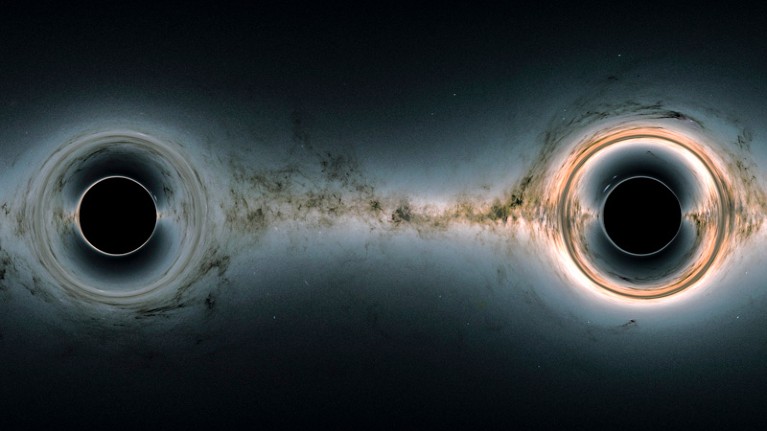A distant source of radio signals in the night sky might be three black holes clustered at the centre of a single galaxy.
Supermassive black holes, which are found at the core of many galaxies, eject beams of plasma that travel near the speed of light. Observations of the radio signals from these jets show that the jets are not perfectly straight, but seem to wiggle. This could be caused either by the black hole’s fast rotation, which warps nearby space and time, or by the presence of two black holes orbiting each other.
Jacques Roland at Sorbonne University in Paris and his colleagues used data from radio telescopes to study a radio source known as 2201+315 that is roughly 1.46 billion parsecs (4.76 billion light years) away. The researchers modelled the wiggles of the plasma beams and found that these could be best explained by a system of three black holes — two larger ones, and a third roughly 100 times smaller than the others.
Understanding how the observed positions of these radio sources change over time could help astronomers to understand the structure of galactic cores.




